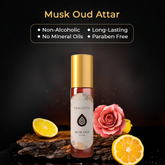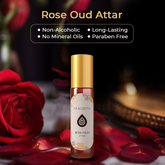How Fragrances Have Shaped History and Culture

Fragrance is more than just a scent; it’s a statement, an identity, and a timeless connection to history. From ancient civilizations to modern luxury, fragrances have always evoked emotions, symbolized status, and defined eras. Let’s explore how the response to iconic scents has evolved through the ages.
Ancient Civilizations: The Divine Connection
In ancient Egypt, fragrances were considered sacred, used in religious rituals, and reserved for the elite. The Egyptians believed in the mystical power of scent, using myrrh and frankincense to communicate with the gods. Similarly, in India, attars made from sandalwood and rose were deeply ingrained in spirituality and Ayurveda, symbolizing purity and healing. The Greeks and Romans, too, recognized the power of fragrance, incorporating it into daily life, public baths, and celebrations.
The Renaissance Era: A Status Symbol
During the European Renaissance, perfumes became a mark of luxury. Royals and aristocrats in France and Italy adorned themselves with rich floral and musky scents, believing perfumes could ward off diseases. The legendary Catherine de’ Medici even carried her own personal perfumer, giving rise to the fragrance industry in France. This era also saw the expansion of perfume trade, with exotic ingredients arriving from the East, further enhancing the opulence of scent compositions.
The 18th & 19th Century: The Golden Age of Perfumery
As perfume production expanded, the 18th and 19th centuries marked the true golden age of perfumery. Perfume houses like Guerlain and Houbigant emerged, bringing artistic craftsmanship to fragrances. The upper class indulged in custom-blended scents, and scented gloves became a fashion statement. Advances in distillation and extraction techniques allowed for the creation of more refined and complex compositions, setting the foundation for modern perfumery.
The 20th Century: Defining Personal Identity
Perfumes transitioned from aristocratic exclusivity to mainstream fashion in the 20th century. The roaring ’20s brought Chanel No. 5, a revolution in perfumery with its bold and sophisticated character. The ’50s introduced glamorous, ultra-feminine scents like Dior’s Miss Dior, while the ’80s embraced strong, statement-making fragrances like Opium and Drakkar Noir. The ’90s saw a shift towards minimalism with fresh and aquatic fragrances such as CK One, marking a new era of gender-neutral and everyday scents.
Modern Times: A Personal and Sustainable Choice
Today, fragrance is all about self-expression and sustainability. The rise of niche perfumery has given consumers the power to curate their own scent wardrobes, mixing and matching unique oud blends, citrusy notes, and spicy accords. Attars and natural perfumes are making a comeback, offering luxurious yet eco-friendly alternatives. Personalized and bespoke fragrances are also on the rise, allowing individuals to craft signature scents that truly reflect their personality and preferences.
Conclusion: Fragrance as a Timeless Experience
From the divine rituals of ancient temples to the personalized collections of today, the response to fragrance has remained iconic through the ages. Scents tell stories, evoke nostalgia, and continue to shape the way we express ourselves. As we move forward, one thing remains certain—fragrance will always be an integral part of culture and identity, evolving yet remaining deeply connected to human emotion and tradition.
At Fragrens, we honor this timeless tradition with our meticulously crafted attars and perfumes. Rooted in decades of perfumery expertise, we bring you scents that resonate across generations. Explore our collection and become part of the legacy where nature's essence meets holistic wellness.










